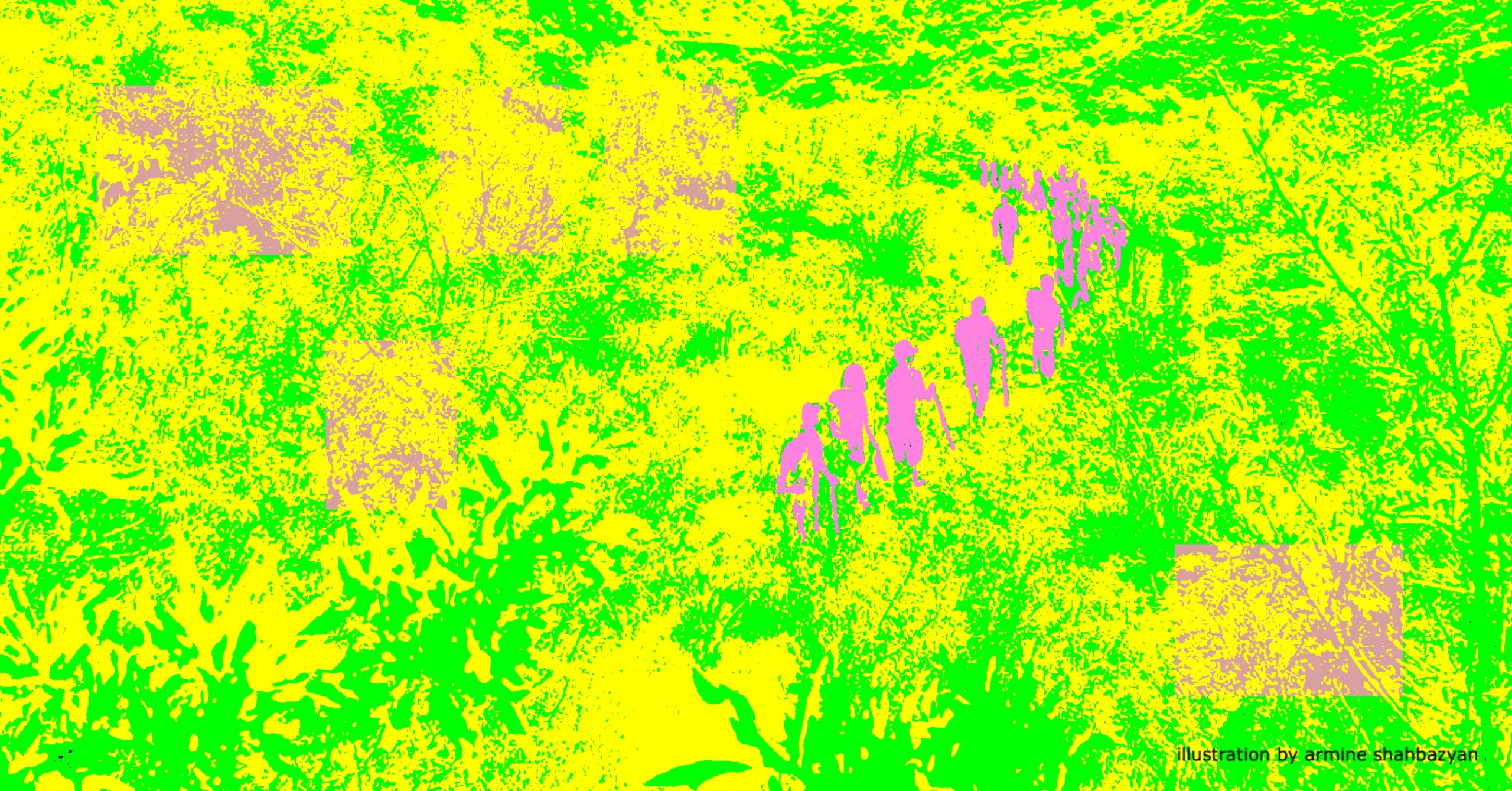
Hidden deep in Armenia’s Khosrov Forest State Reserve, two striking waterfalls cascade over sharp, rocky cliffs. Named after the ancient pagan gods Vahagn and Astghik, the site blends natural beauty with cultural mythology, offering visitors an escape from everyday life into the heart of one of Armenia’s most captivating landscapes.
Located in Ararat region, Khosrov Forest State Reserve is one of the oldest protected areas in the world, its origins tracing back over 1,700 years. Armenian King Khosrov Kotak of the Arshakuni dynasty established the reserve between 334 and 338 CE for hunting, military drills and recreation. It was formally recognized as a protected reserve in 1958 by the Soviet Armenian Government in acknowledgment of its extraordinary biodiversity.
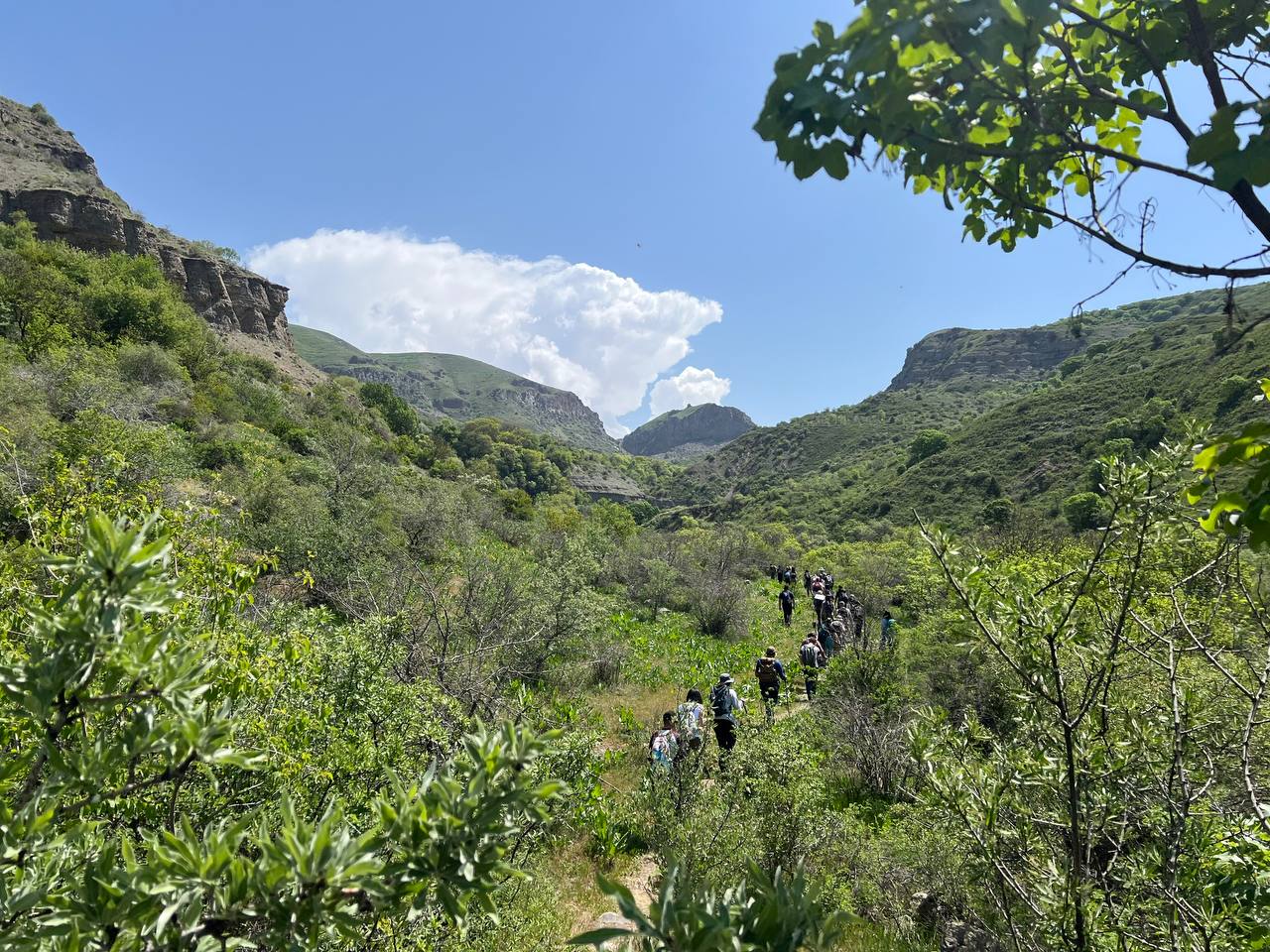
Khosrov Forest State Reserve.
Positioned within the Caucasus biodiversity hotspot, Armenia is among the 36 most biologically rich countries on the planet. Despite its modest size, the country boasts an astonishing range of ecosystems—arid steppes, lush forests, highland plateaus and alpine meadows—supporting a wide array of endemic species. This striking variation in climate and terrain has nurtured a wealth of endemic species, making Armenia a sanctuary for unique flora and fauna.
Khosrov Forest is home to 24 endemic plant species, along with 31 species of rare plants and fungi, and 66 animal species classified as endangered. Among its most elusive inhabitants are the bezoar goat and the endangered Persian leopard, of which only an estimated 10 remain in Armenia. The reserve also shelters the Syrian brown bear, the Eurasian lynx and the Armenian mouflon, a wild sheep native to the region’s rugged highlands.
Amid this ecological treasure are four waterfalls, collectively known as the Aghjots Falls. The Astghik and Vahagn waterfalls are the most striking, remote, little-known and captivating. Long overlooked by both tourists and even locals, they have only recently begun to draw visitors, in part because they were overshadowed by the well-known tourist attractions like the Temple of Garni or Lake Sevan. Still largely off the beaten path, the Astghik and Vahagn waterfalls are absolutely worth a visit.
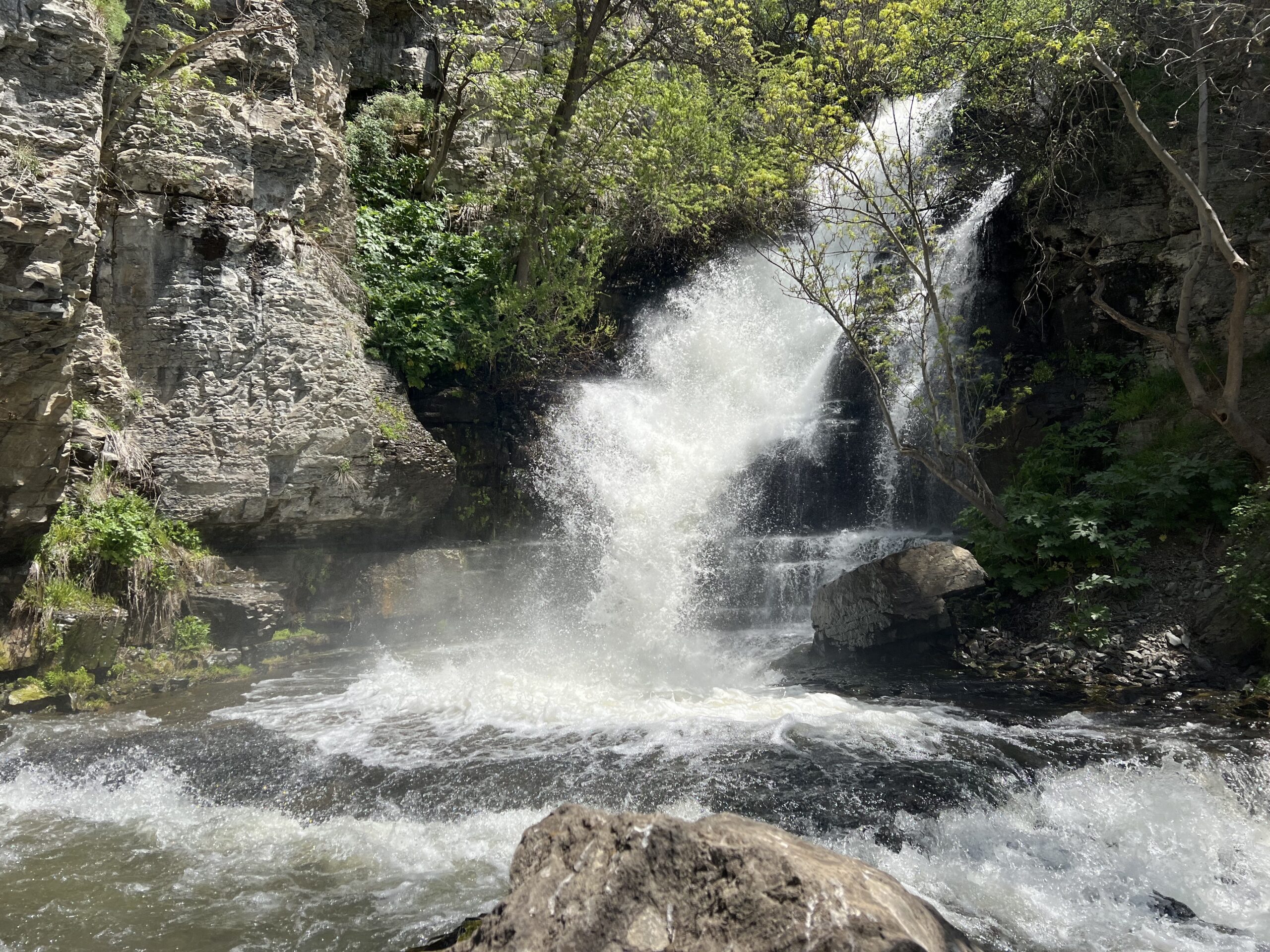
The Astghik Waterfall.
These two waterfalls derive their names from Armenian pre-Christian mythology. Vahagn, the god of war and courage, was said to have rescued his bride, Astghik, the goddess of beauty, love and water, from the underworld. According to legend, Astghik would bathe beneath the waterfall each evening. One day, an evil dragon––the god of the underworld––abducted Astghik. Love and beauty vanished from the world, until Vahagn, renowned as a dragon slayer, descended to the underworld, defeated the dragon and returned with Astghik, thus restoring love and beauty to the world. The waterfalls were named in their honor, a tribute to one of Armenia’s enduring myths.
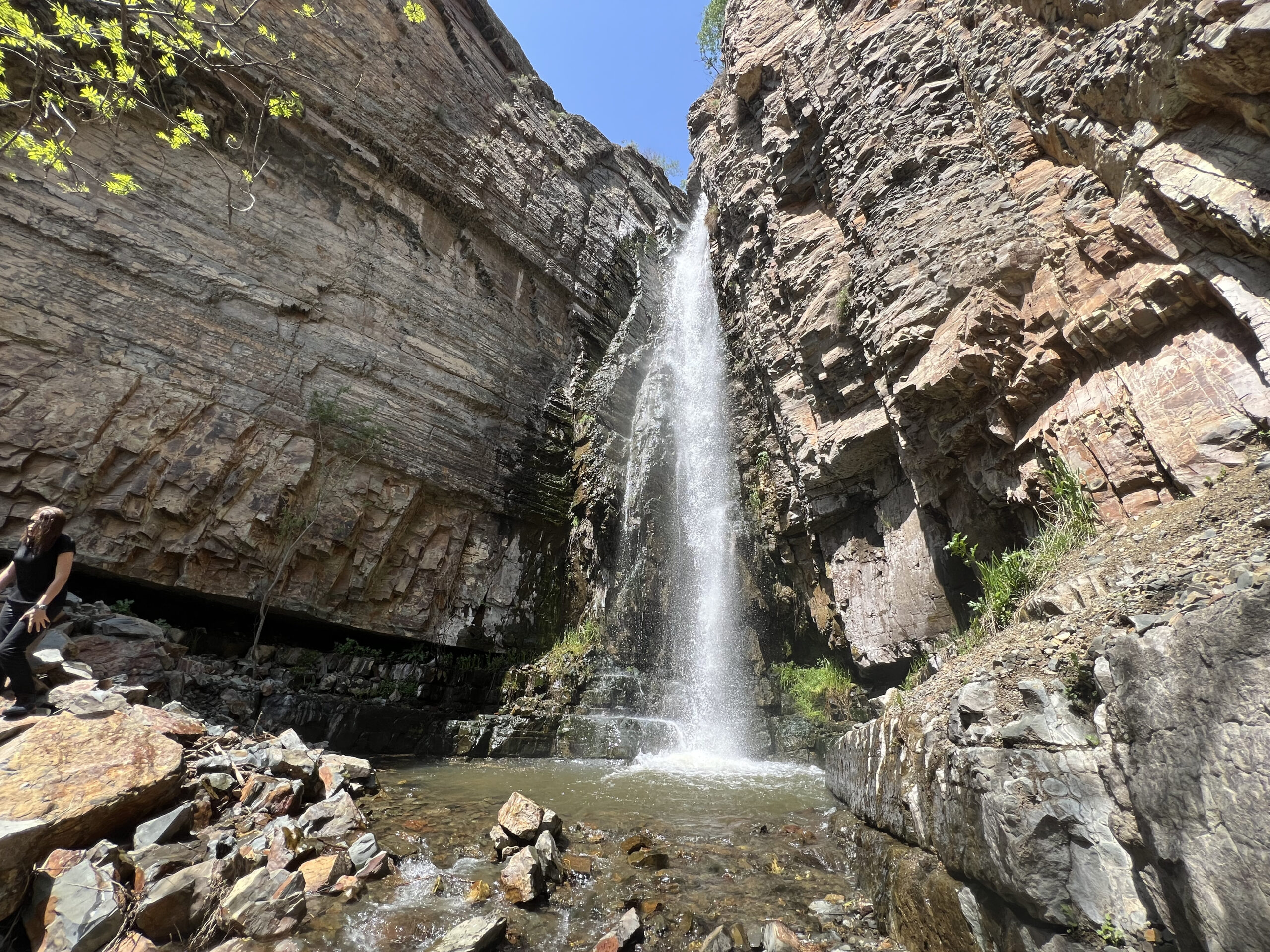
The Vahagn Waterfall.
Set amid the rocky terrain of Garni Gorge, the Vahagn waterfall plunges forcefully from the cliffs, creating a dramatic view, and sending spray into the canyon below. Visitors are strictly forbidden from approaching the base due to the risk of falling rock. In contrast, the Astghik waterfall is gentler with water flowing down moss-covered cliffs.
Since the waterfalls lie within a state-protected reserve, access is somewhat limited. Visitors must be accompanied by a tour guide. Tatev Petrosyan, a hiking guide at Trichq Hiking Club, says many of the reserve’s trails, including those leading to the waterfalls, are now visible on navigation apps. “One of the most popular routes in the reserve is the trail to Vahagn and Astghik waterfalls,” she notes. “Much of it is accessible by car, and while some sections require careful navigation, the overall journey is straightforward.”
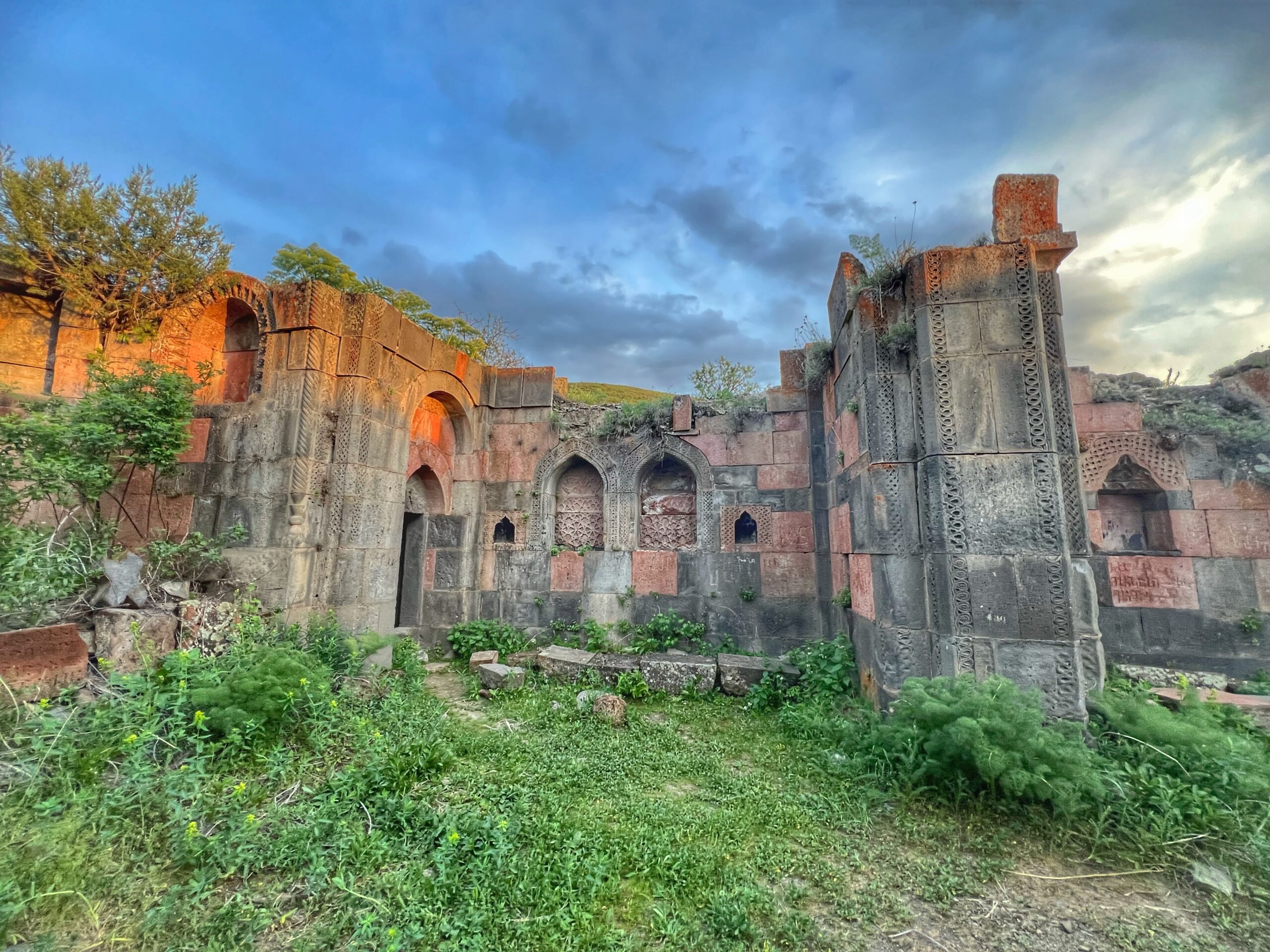
Aghjots Monastery.
Spring and fall are the prime seasons to visit the waterfalls—from mid-March through June, or September to November. The springtime offers the opportunity to see wildflowers in bloom, while autumn time showcases colorful landscapes and wildlife. The temperature in both seasons is pleasant and perfect for hiking.
“Vahagn waterfall is one of my favorite places in the reserve, it’s incredibly picturesque,” says Petrosyan, who also recommends the view from the 11th-century Havuts Tar Monastery at sunset. “It’s absolutely worth the hike.”
Beyond the Astghik and Vahagn waterfalls, Khosrov Reserve is a repository of Armenian history. Scattered across its territory are more than 300 registered monuments, including 29 religious structures—monasteries, churches and chapels—alongside 19 settlements, 222 khachkars (carved cross-stones) and gravestones, and 40 other medieval monuments, though most are in ruins. Among these are the Havuts Tar Monastery, the Aghjots Monastery complex, and the fortress of Kakavaberd.
Liza Manukyan, an avid hiker, ranks Khosrov Reserve among Armenia’s best hiking destinations. “Khosrov Reserve combines stunning nature with ancient historical monuments,” she says, noting that its proximity to Yerevan is a major advantage. “It’s an easy hiking trail full of beautiful and rapidly changing scenery where you can connect to nature.”
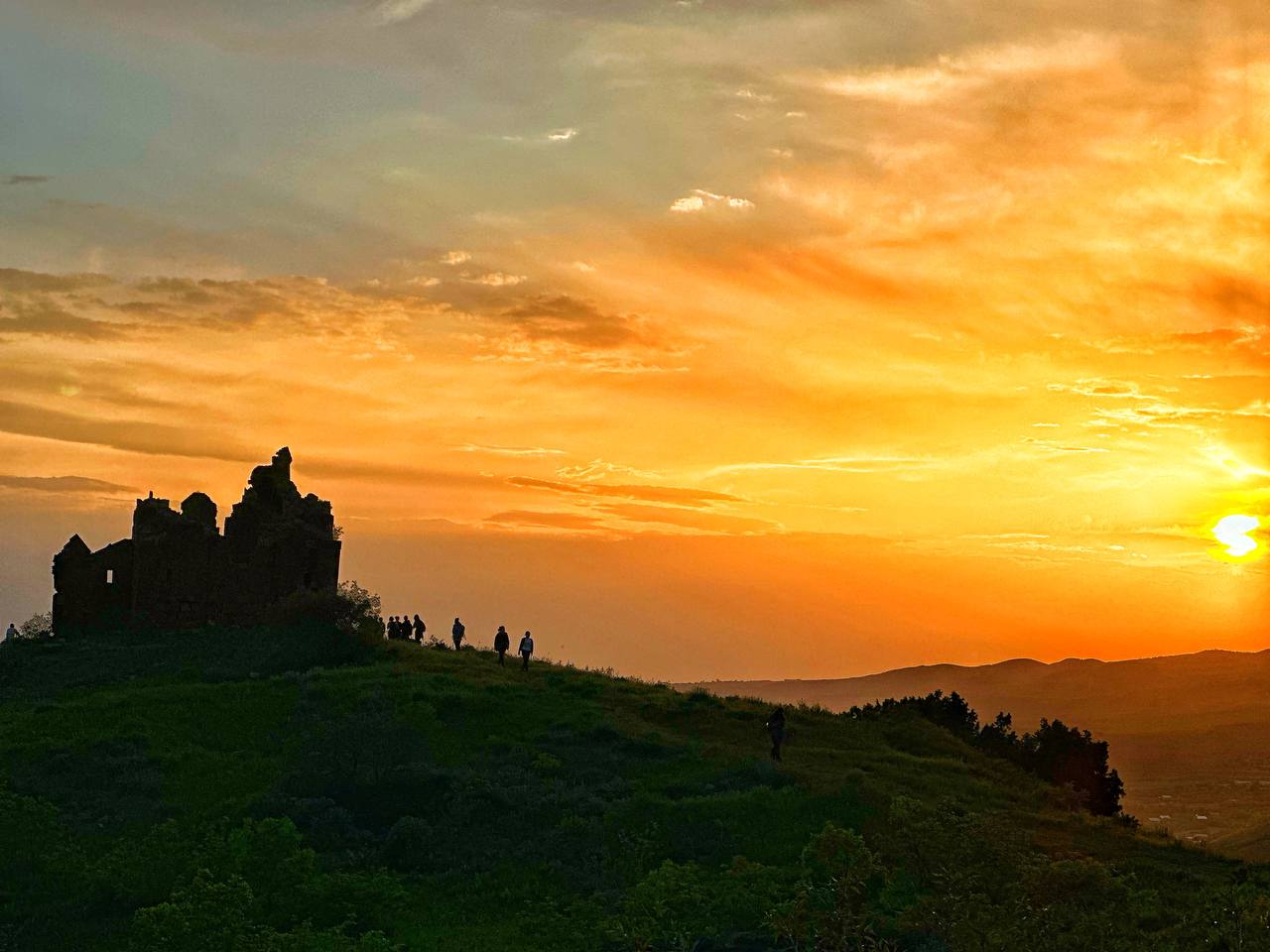
Photos courtesy of Tatev Petrosyan.
Despite its striking landscapes and wealth of historical sites, Khosrov Forest State Reserve remains largely off the radar for many tourists. “Unfortunately, we haven’t seen a noticeable increase in tourists in our club’s statistics,” Manukyan says. Part of the reason, she notes, is limited access. “Several trails remain closed to the public. If more of the reserve were opened for hiking, we’d likely see a significant rise in visitors.”
Still, for those willing to venture beyond the usual tourist routes, the Vahagn and Astghik waterfalls offer more than just natural beauty, they are also a quiet escape into mythology, biodiversity and history. For those seeking a peaceful break from city life, a visit to Khosrov Reserve offers both a hiking adventure and a deeper connection with nature.

